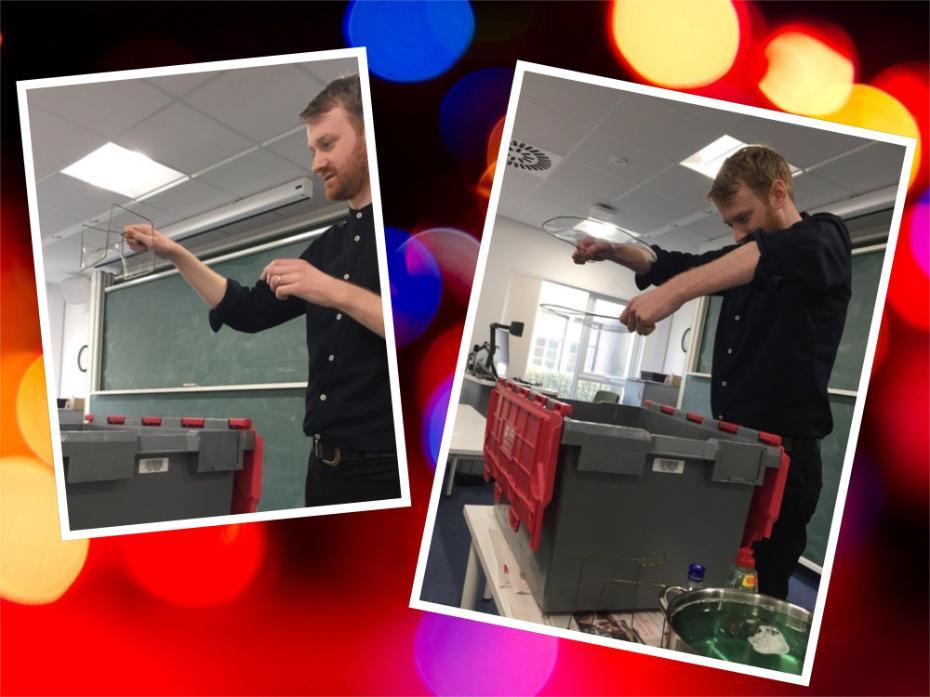Curvature and bubbles
Published: 25 March 2019
By Tom Hockenhull, EPSRC Doctoral Prize Fellow
"In the differential geometry course, we’ve been looking at ’surfaces’ — things which look, on a small scale, like something smooth and two-dimensional. Most of what we’ve been doing is trying to understand what it means for a surface to be ‘curved’, and how to measure this. One measure of how curved a surface is, is how curved it is if you live in it: for instance, we can see that the earth is ‘positively' curved by drawing a triangle with a corner at the north pole and two on the equator, so that it has three right angles — which is impossible in a flat piece of paper!
Another idea of curvature is how curved your surface looks from the outside: for instance, a piece of paper can be rolled up into a tube — so these things both look the same if you live on their surface — but from the outside one is clearly more bent than the other. One way to see this is if I take a little disc and look at whether it gets bigger or smaller if I project it outwards from the surface: from a flat piece of paper, it just stays the same size; from the sphere it gets bigger (for instance, look at a hemisphere: if I pull this outwards uniformly it becomes a bigger hemisphere); in a valley it gets smaller. This type of curvature is called the ‘mean curvature’.
In a rare occurrence for a pure maths course, these things have a very concrete real world application! Something with zero mean curvature should locally minimise its surface area, in the sense that any nearby surface has bigger surface area. This is exactly what films of soap do! They try and minimise their energy by minimising their surface area.
In lectures, we worked out some examples of surfaces with zero mean curvature just using pure theory: then we verified that the real world works properly by making some soap films and seeing that they formed the surfaces we expected!"

First published: 25 March 2019
<< March 19

